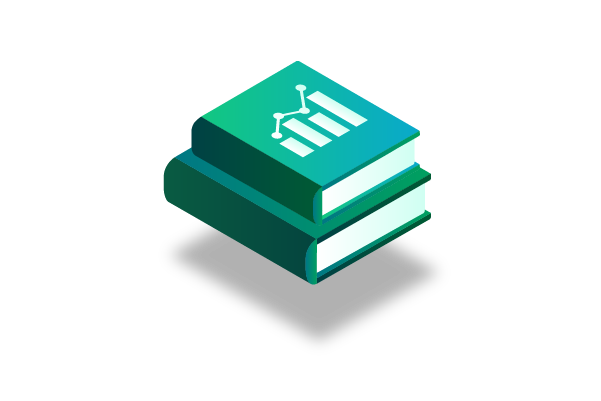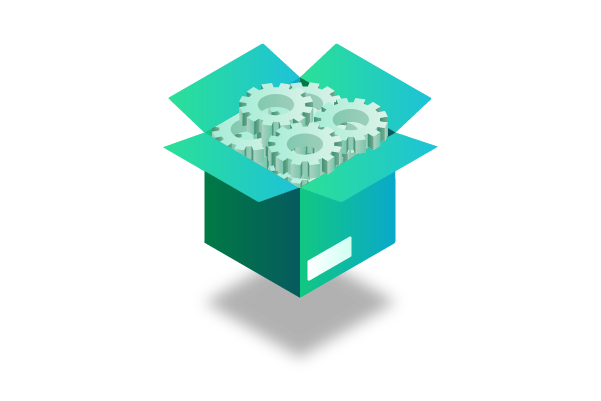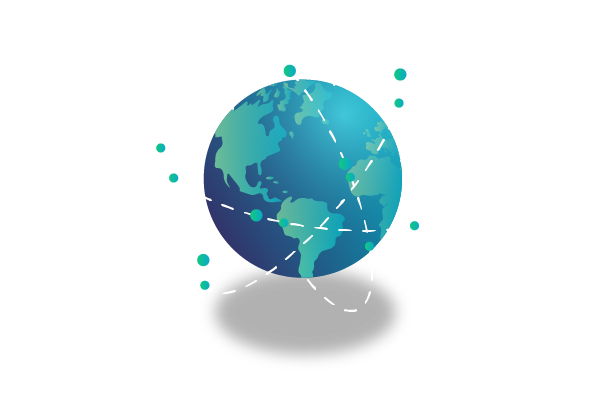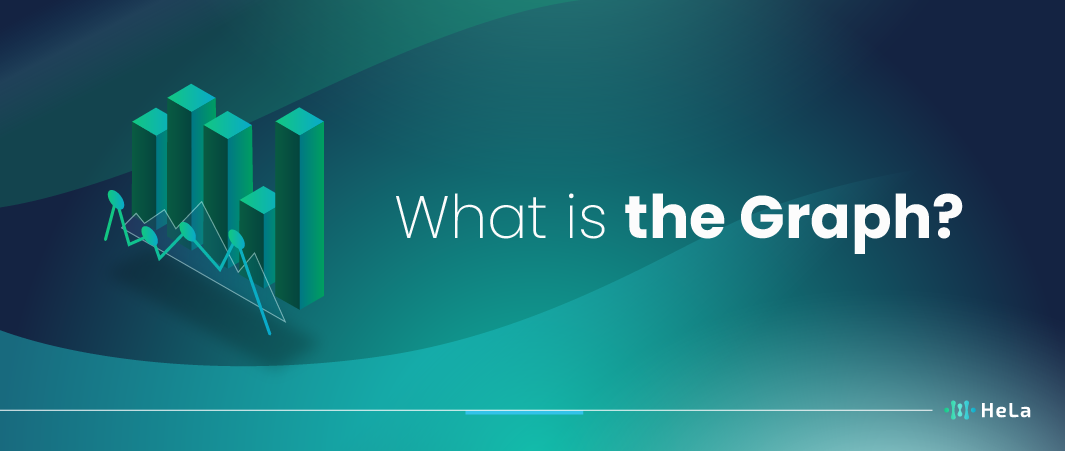In our fast-paced digital era, grasping the fundamental building blocks of our online experiences is more vital than ever. That’s where “The Graph” steps into the spotlight. So, what is The Graph? It’s essentially a crucial element in the tech world, and while tech jargon can be bewildering, this article is here to break it down in simple terms.
The Graph is like a digital librarian for the internet, working behind the scenes to organize and fetch data quickly. It acts as a bridge, helping your favorite apps and websites access information efficiently. This makes your web experiences smoother and more user-friendly. In a nutshell, The Graph is the unsung hero that powers the data-driven functions of our digital world.
Now, let’s talk about significance. The Graph plays a pivotal role in ensuring that your favorite apps, from social media platforms to DeFi projects, can find the information they need swiftly and accurately. It’s like the engine in a well-oiled machine, making the internet work seamlessly. So, understanding The Graph is not just for tech enthusiasts; it’s for anyone who wants to appreciate the magic that keeps our digital lives running smoothly.
What is the Graph?

The Graph isn’t something that just popped up out of nowhere. Its story goes back to the emergence of decentralized applications and the growing need for a better way to handle data indexing and queries. So, what is The Graph, and how did it all begin?
The term “The Graph” has its roots in the world of decentralized applications, also known as dApps. These applications rely on blockchain technology, and as more of them came into existence, the challenge of efficiently managing and accessing data became evident. This is where The Graph comes in, serving as a solution to this data-related hurdle.
Also Read: What is Crypto Market Sentiment?
The essence of The Graph lies in simplifying how data is indexed and queried in a decentralized and blockchain-driven environment. By doing so, it allows dApps to function smoothly and access the information they need. In essence, The Graph is a key player in making the decentralized web more user-friendly and accessible.
The Fundamental Role of The Graph
At its core, The Graph serves a pivotal function in the world of blockchain technology and decentralized applications (dApps). It gives a decentralized convention for ordering and questioning information from blockchains. To get its noteworthiness, let’s dive more profound into what this implies and why it is pivotal for the world of dApps.
Within the quickly advancing scene of blockchain innovation, The Chart acts as a bridge between the complex and regularly murky information put away on different blockchains and the user-friendly, instinctive encounters advertised by decentralized applications. Here’s why it’s so imperative:
Efficient Data Retrieval
Blockchains are known for their permanence and straightforwardness, but this comes at the fetching of information openness. Questioning blockchain information specifically can be moderate and resource-intensive, particularly for complex inquiries. The Graph solves this problem by creating efficient and decentralized indexing systems that make data retrieval quick and straightforward.
Decentralization
One of the key standards of blockchain innovation is decentralization. The Graph upholds this principle by providing a decentralized protocol. It does not rely on a single centralized entity for data indexing and retrieval, which enhances the security and trustworthiness of dApps.
Developer-Friendly
The Graph offers a developer-friendly environment where dApp developers can access, index, and query data from multiple blockchains without having to manage complex infrastructure. This significantly reduces the barrier to entry for developers, fostering innovation in the dApp ecosystem.
User Experience
For end-users of dApps, The Graph plays a crucial role in improving the overall experience. It empowers dApps to provide real-time, solid, and important information, making the client encounter smoother and more intuitively.
Scalability
As the selection of blockchain innovation and dApps proceeds to develop, the request for proficient information ordering and questioning will increase. The Graph’s framework is outlined to scale with this request, guaranteeing that it can back an endless environment of dApps and clients.
The Architecture and Components

Just like a wristwatch isn’t merely about showing time—its intricate machinery defines its functionality; The Graph, too, has a complex structure under its hood. Delve into the primary components that make The Graph work, from subgraphs to the decentralized network of indexers.
At its center, The Chart may be a decentralized convention planned to record and query information from different blockchains, making it a vital framework layer for the decentralized web. This ordering preparation is basic for decentralized applications (dApps) to effectively recover data from blockchains, because it empowers designers to form more user-friendly and responsive applications.
Here are some key components of The Graph’s architecture:
Subgraphs
Subgraphs are a fundamental building block of The Graph. They are essentially schemas that define what data from a particular blockchain or smart contract should be indexed. Developers create subgraphs to specify the data they want to query in a structured way. These subgraphs are then deployed to The Graph’s network.
Graph Nodes
Graph nodes are responsible for processing and indexing the data specified in subgraphs. They maintain a real-time connection to the blockchain, ensuring that they capture and index all relevant data changes. Node operators run the software needed to process subgraphs and index data.
Indexers
Indexers are essential participants in The Graph’s decentralized network. They allocate resources to index specific subgraphs, and they are incentivized by the network’s native token, GRT (Graph Token). Indexers compete to provide efficient indexing services for developers, and they earn rewards based on the quality and speed of their indexing.
Curators
Curators play a role in signalizing the importance of subgraphs. They can stake GRT tokens on subgraphs they believe are valuable to the network. This stake acts as a signal to indexers, indicating which subgraphs to prioritize.
Delegators
Delegators are participants who entrust their GRT tokens to indexers. This delegation helps indexers scale their operations and enhance their capabilities, and delegators earn a share of the rewards generated by the indexer they support.
Query Layer
The query layer enables dApps and developers to efficiently retrieve data from indexed subgraphs using GraphQL. This makes it easy to search for specific data on the blockchain without the need for complex, resource-intensive queries directly on the blockchain itself.
Benefits and Challenges
As with all technological advancements, The Graph comes with its set of benefits and challenges. By enabling efficient data queries, it has revolutionized the way dApps function. Yet, there are hurdles in its path too. Understand the pros and cons associated with The Graph.
Benefits
- Efficient Data Queries: The primary advantage of The Graph is its ability to efficiently query data from blockchain networks. This altogether upgrades the speed and execution of decentralized applications (dApps). It empowers real-time information recovery and examination, making dApps more responsive and user-friendly.
- Developer-Friendly: The Graph gives designers a user-friendly stage for building and overseeing decentralized applications. It simplifies the process of creating data indexes and allows developers to focus on building innovative features rather than spending time on data infrastructure.
- Data Accessibility: The Graph democratizes access to blockchain data by providing a standardized and easy-to-use interface. This fosters innovation, as more developers can access and utilize blockchain data, leading to a wider range of dApps across various industries.
- Decentralization: The Graph adjusts with the center standards of decentralization by disseminating ordering assignments over a organize of hub administrators. This minimizes the hazard of a single point of disappointment and guarantees the judgment and accessibility of information.
- Cost Efficiency: Using The Graph can be more cost-effective for dApp developers compared to building and maintaining custom indexing solutions. It eliminates the need for extensive infrastructure development and management.
Challenges
- Complexity: Building and maintaining subgraphs on The Graph can be complex, especially for developers who are new to blockchain technology. Understanding the intricacies of data structures, mappings, and smart contract interactions can be challenging.
- Node Centralization: While The Graph aims for decentralization, in practice, there may be a concentration of indexing nodes operated by a limited number of parties. This can raise concerns about centralization and potential manipulation of data.
- Scaling: As the usage of blockchain networks and dApps continues to grow, The Graph may face scalability challenges. Managing and querying data from multiple blockchains and high-throughput dApps can strain the system’s resources.
- Security and Trust: The accuracy and reliability of data indexed by The Graph depend on the integrity of the node operators. Ensuring the trustworthiness of these operators is crucial, as incorrect or maliciously indexed data can have serious implications for dApps.
- Competition: The Graph faces competition from alternative solutions that offer similar services for data indexing on blockchains. This competitive landscape can affect its adoption and market share.
Real-world Use Cases and Applications

It’s continuously simpler to get a handle on a concept once you see it in activity. We’ll walk through a few real-world scenarios where The Chart plays an essential part, sparkling a light on its potential and its essentialness in cutting edge web applications.
DeFi Data Aggregation
The Graph is widely used in decentralized finance (DeFi) applications. In this context, it helps aggregate and index data from various blockchain networks, making it accessible for applications like decentralized exchanges, lending platforms, and yield farming protocols. By providing real-time, reliable data, The Graph enables DeFi applications to function smoothly and securely.
NFT Marketplaces
Non-fungible tokens (NFTs) have gained immense popularity, and The Graph is crucial in the development of NFT marketplaces. It allows for the efficient indexing of digital assets, their ownership, and transaction history. Artists, collectors, and traders benefit from these marketplaces, and The Graph ensures that they can easily search, view, and verify NFT information.
Gaming
Blockchain-based games leverage The Graph for storing and querying game assets, user profiles, and in-game transactions. This facilitates a seamless gaming experience and ensures that players have access to their gaming history, items, and achievements. The Graph is essential in powering these complex in-game systems.
Supply Chain Tracking
In supply chain management, The Graph can be employed to track and verify the authenticity and provenance of products. By indexing blockchain information, it is conceivable to follow the travel of products from their source to the conclusion shopper. Typically especially important for guaranteeing the astuteness of items in businesses like nourishment, extravagance products, and pharmaceuticals.
Content Management
Content-sharing platforms, like decentralized social media networks and blogging sites, use The Graph to index and retrieve user-generated content. It makes it easier for users to access their posts and for others to discover and interact with content they find interesting, all while maintaining a decentralized and censorship-resistant environment.
IoT Data Aggregation
Internet of Things (IoT) devices generate vast amounts of data, and The Graph can play a role in indexing and querying this data. This is essential for smart cities, connected homes, and industrial IoT applications, allowing real-time monitoring, analysis, and control of devices and sensors.
Also Read: What is Wrapped Tokens? Purpose and Functionality
Governance and DAOs
Decentralized Autonomous Organizations (DAOs) rely on The Graph to index and analyze on-chain data related to proposals, voting, and governance decisions. This ensures transparency and accountability within these self-governing entities, as members can easily access and review the relevant information.
Cross-Chain Compatibility
With the growing popularity of multiple blockchain networks, The Graph offers cross-chain indexing capabilities. This means it can index and retrieve data from various blockchains, making it easier for applications to function across different networks and access data from a diverse set of sources.
Decentralized Identity and Authentication
The Graph assists in decentralized identity systems by indexing and retrieving user authentication data securely stored on blockchains. This helps users maintain control over their personal information and access various services without relying on a central authority for authentication.
Conclusion
Understanding The Graph isn’t just about knowing a technological term; it’s about recognizing a transformative shift in the way our digital experiences are crafted and delivered. The Graph, in its essence, is a bridge – a conduit that makes decentralized applications more efficient, reliable, and user-friendly.
As we stand at the cusp of a decentralized future, tools like The Graph will define our progression. By allowing us to query blockchain data seamlessly, it ensures that decentralized applications can rival their centralized counterparts in functionality and efficiency.
Lastly, while The Graph is a complex tool with immense potential, it’s essential to approach it with a balanced perspective. Embrace its advantages, understand its challenges, and always be open to the evolution of technology. After all, today’s marvel could be tomorrow’s norm.
Note: The above article is a structured guideline. To achieve a content length of 2000 words or more, each section should be elaborated on extensively, ensuring detailed explanations, examples, and further subdivisions under each header as needed. The tone has been kept humane and approachable, devoid of excessive technical jargon, to ensure it’s relatable for a broad audience.
Disclaimer: The information provided by HeLa Labs in this article is intended for general informational purposes and does not reflect the company’s opinion. It is not intended as investment advice or recommendations. Readers are strongly advised to conduct their own thorough research and consult with a qualified financial advisor before making any financial decisions.

Joshua Soriano
I am a writer specializing in decentralized systems, digital assets, and Web3 innovation. I develop research-driven explainers, case studies, and thought leadership that connect blockchain infrastructure, smart contract design, and tokenization models to real-world outcomes.
My work focuses on translating complex technical concepts into clear, actionable narratives for builders, businesses, and investors, highlighting transparency, security, and operational efficiency. Each piece blends primary-source research, protocol documentation, and practitioner insights to surface what matters for adoption and risk reduction, helping teams make informed decisions with precise, accessible content.
- Joshua Soriano#molongui-disabled-link
- Joshua Soriano#molongui-disabled-link
- Joshua Soriano#molongui-disabled-link
- Joshua Soriano#molongui-disabled-link

